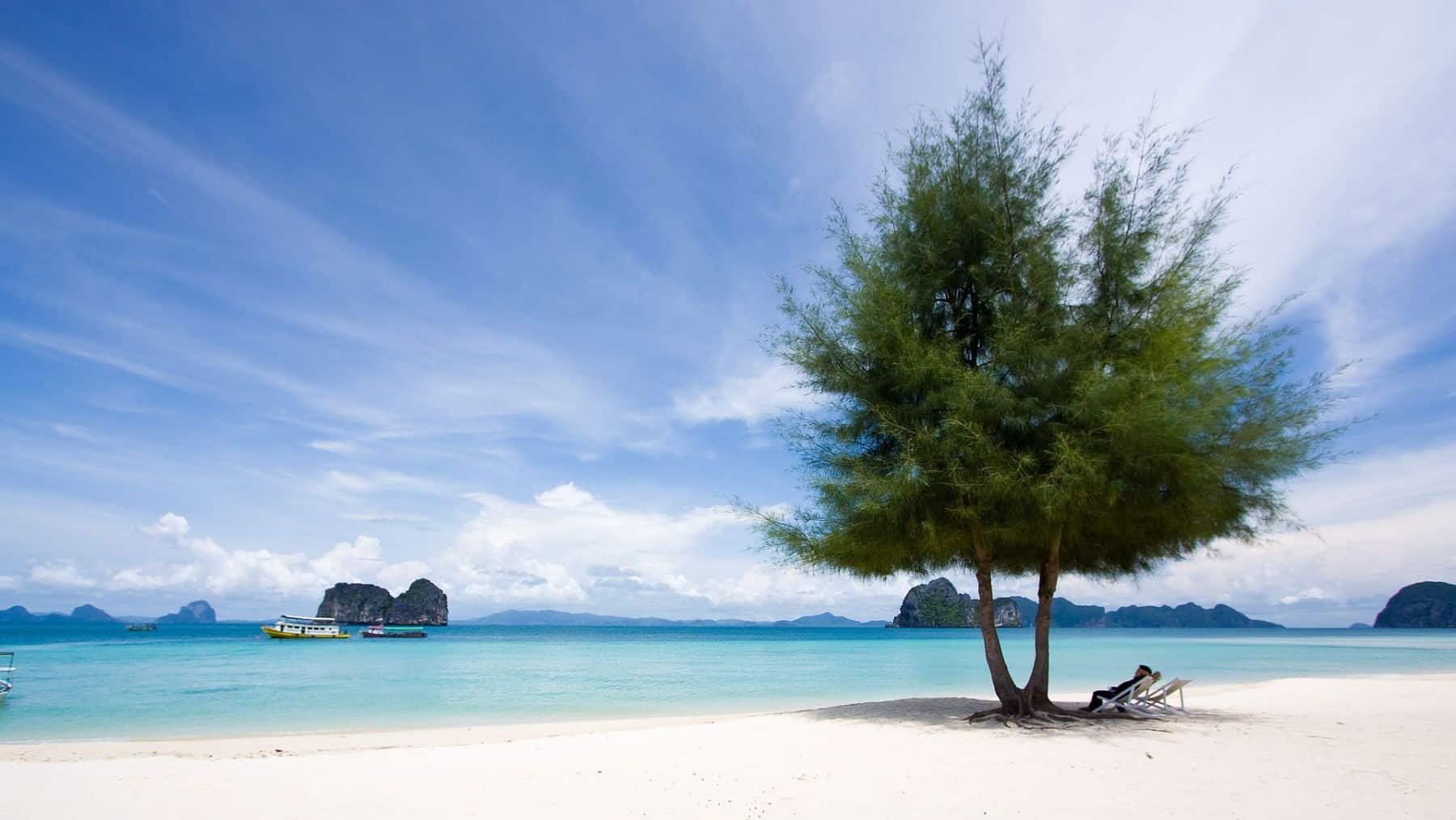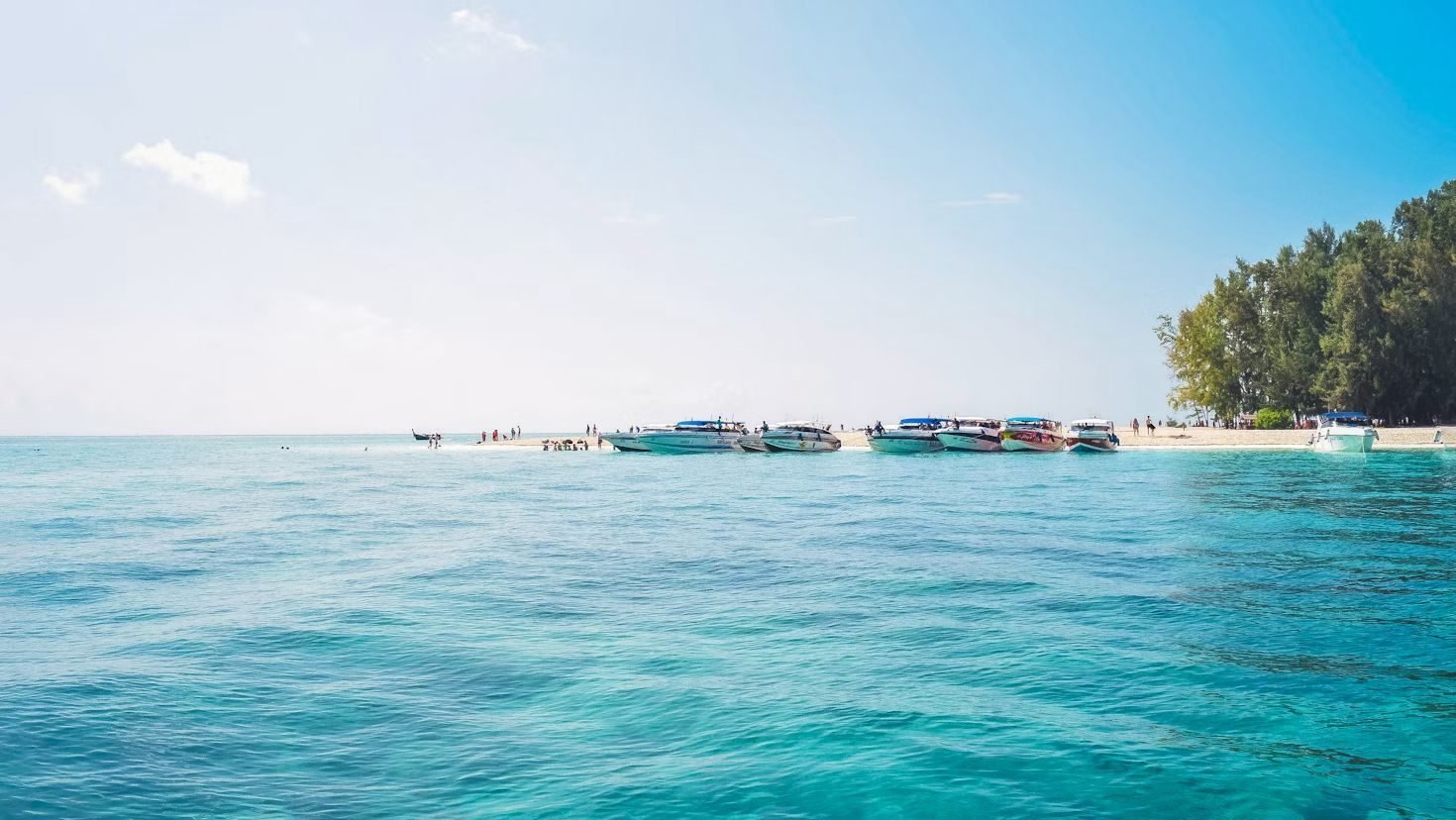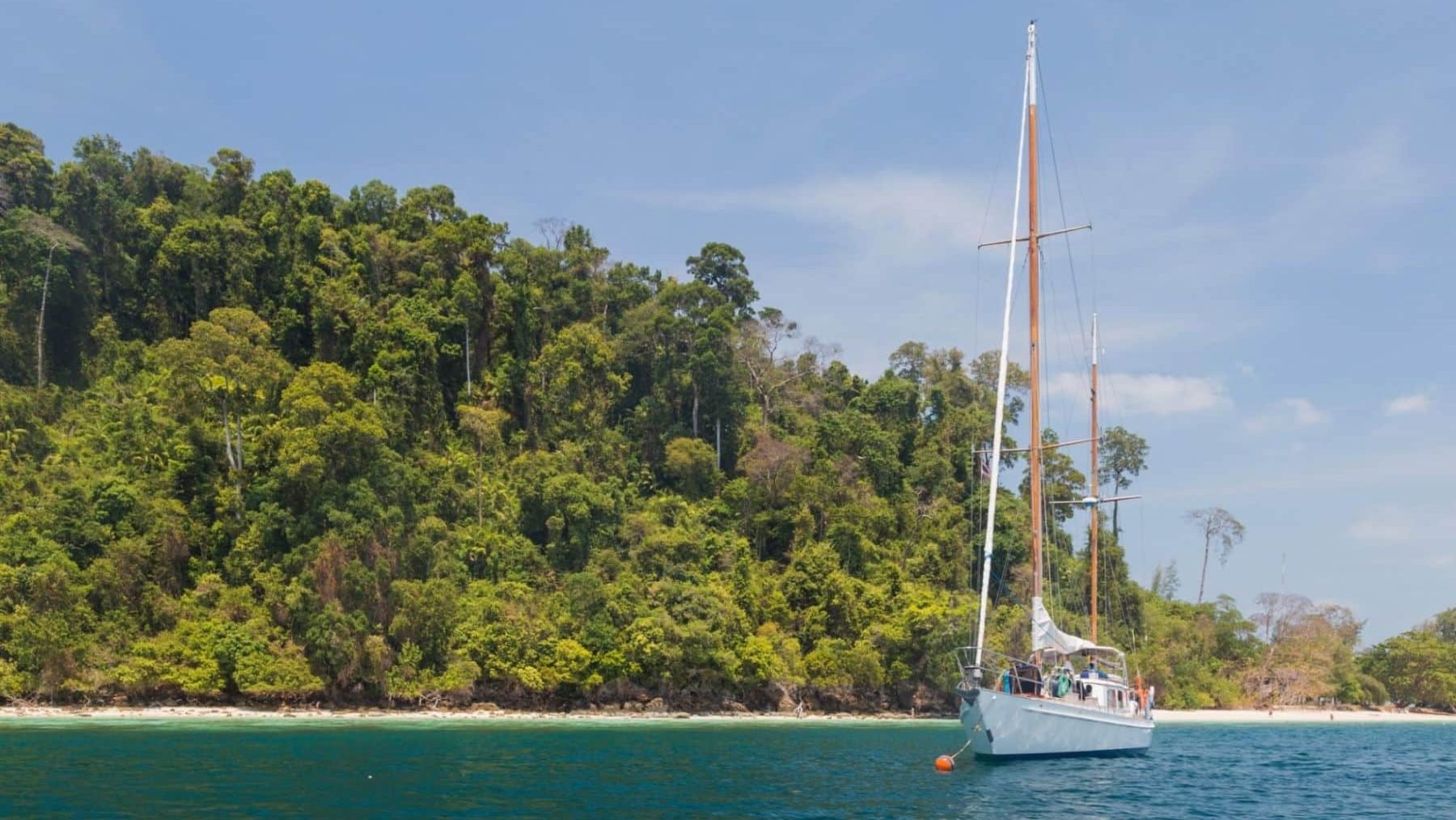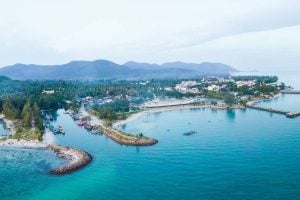Best islands to visit in Thailand before peak tourism season hits
Escape the crowds and catch Thailand's islands at their best before the high-season rush

The Thaiger key takeaways
- November is the sweet spot. The month offers sunshine without the crowds or inflated prices.
- The Andaman Sea and Eastern Gulf are dry and peaceful, while the Southern Gulf is still rainy.
- ravel insurance like SafetyWing’s Nomad Insurance keeps you covered across Thailand’s islands for stress-free adventures.
Thailand’s peak season (the cool and dry season from November to March) is coming, which means full flights to the islands, beach loungers booked before breakfast, hotel prices that make you blink twice, and worst of all… beaches so full you’ll struggle to find a spot big enough for your towel. But if you time it right and know where to go, you can have clear blue skies, affordable hotels, calm seas, relatively empty beaches, and plenty of carefree, worry-free days.
Not every island shines at the same time, though. While the Southern Gulf (Samui, Pha Ngan, Tao) is still battling rain, the Andaman Sea and the Eastern Gulf have already switched to sunshine. The trick is choosing the right side and the right islands before the high-season rush.
Here’s your guide to the five best islands to visit in Thailand before peak tourism season hits.
On this page
| Island (Jump to Section) | Summary |
| Koh Lanta | Big, laid-back, and ideal for exploring by scooter. It has great beaches, diving spots, and eco-friendly vibes. |
| Koh Yao Noi | Peaceful and scenic, perfect for kayaking in Phang Nga Bay or relaxing on quiet beaches far from crowds. |
| Koh Ngai | Tiny and tranquil with crystal-clear water, no cars, and just enough boutique resorts for a private escape. |
| Koh Chang | Thailand’s Elephant Island mixes beaches, waterfalls, jungle trails, and relaxed nightlife in one scenic spot. |
| Koh Kood | Quiet and unspoiled with white sand, waterfalls, and fishing villages. It’s ideal for a peaceful getaway before peak season. |
| How to travel Thailand’s islands safely | Island life is easygoing, but having travel insurance like SafetyWing ensures peace of mind wherever you go. |
1. Koh Lanta

Koh Lanta boasts that easy charm that keeps people coming back. It’s big enough to explore but calm enough to keep its soul.
There are plenty of adventures to experience here, so we recommend renting a scooter and cruising down the coast. Stop at Long Beach for a swim, Kantiang Bay for sunset, and Mu Ko Lanta National Park for jungle trails and beautiful coves. Many also come to the island for snorkelling and diving in Koh Haa and Koh Rok, two small uninhabited islands inside the national park. Both areas boast crystal clear waters and colourful coral reefs.
Lanta Old Town is well worth a visit, too, especially if you love history. Here, you’ll find traditional wooden houses sitting on the water and narrow lanes. It’s also home to the Lanta Community Museum, where you can learn about the island’s history through exhibits and photographs.
Koh Lanta has been recognised internationally for its sustainability. Its national park made the 2025 Green Destinations Top 100 list, thanks to conservation work like the Return Home to Hermit Crabs initiative. This means that you can enjoy paradise knowing the community is actively protecting it.
Getting there: The easiest route is via Krabi Airport, about a one-hour flight from Bangkok. From there, you can find minivans that connect to Koh Lanta via a short car ferry. The whole journey takes around two hours. You can also travel from Phuket by speedboat, which takes about three to four hours, linking Rassada Pier in Phuket with Saladan Pier on Koh Lanta.
2. Koh Yao Noi

Halfway between Phuket and Krabi, Koh Yao Noi offers quiet beaches and a glimpse of Thai island life untouched by mass tourism. The scenery alone is worth the trip, but while most tourists come here for the peace and the view, there’s plenty to fill a few days.
Start with a three-island longtail tour, a local favourite that visits Koh Kudu Yai, Koh Kudu Roi, and Koh Roi. These smaller islands sit quietly in Phang Nga Bay, and they’re perfect for snorkelling and exploring hidden lagoons. The moment your longtail rounds the cliffs at Koh Roi and glides into a still, turquoise lagoon surrounded by limestone walls feels like something out of a film.
Back on land, head to The Khai Village, the island’s main hub. It’s just one main street with a small market, a bank, and a few food stalls. You can grab a roti pancake from one of the vendors, browse handmade batik fabrics, and pick up local coconut-oil skincare.
For beach time, Pasai Beach is the easiest to reach and is lined with cafés. For something quieter, head down a bumpy dirt track to Long Beach (yes, the same name as the one in Koh Lanta). It’s quiet even during peak season, so the rest of the world feels far away.
Getting there: From Phuket’s Bang Rong Pier, it’s a 30-minute speedboat ride to Koh Yao Noi. From Krabi’s Tha Len Pier, you’ll reach it in roughly the same time. Both routes are straightforward and affordable, with boats running regularly throughout the day.
3. Koh Ngai

Tiny, quiet, and fringed by clear water, Koh Ngai is what most people imagine when they think of a tropical island escape. It sits quietly in the Trang archipelago, a chain of islands south of Krabi that doesn’t get the same attention as the big names up north. The water is impossibly clear, the beaches are soft and white, and there are no cars, no scooters, and barely any roads.
The island is about four kilometres long and two wide, and the main beach stretches across the east side, facing the mainland. There’s honestly not much to do here, but that’s exactly why people love it. You can stroll the beach from end to end in under an hour, kayak over to neighbouring Koh Mook or Koh Kradan, or swim straight off the sand where the coral reef sits just metres from the shore.
For something a little adventurous, walk through the short jungle trail that leads to Paradise Beach. It winds uphill through dense greenery before opening up to a quiet stretch of sand. If you keep going another half-hour, you’ll reach a simple viewpoint overlooking the southern tip of the island.
Koh Ngai is known to be pricey. Accommodations here lean towards the boutique side, and dining options are still limited and mostly tied to resorts. But if you’re looking for a few days of pure quiet and salt air, there’s nowhere quite like it.
Getting there: From Koh Lanta, speedboats take about 45 minutes to reach Koh Ngai. Travelling from Trang is also simple: head to Pak Meng Pier and catch a ferry or speedboat for a one-hour ride. By November, sea conditions are steady and boats run daily.
4. Koh Chang

Known as Elephant Island, Koh Chang is Thailand’s third-largest island. It’s located near the Cambodian border in Trat Province, about 310 kilometres southeast of Bangkok. Since it’s part of the Mu Ko Chang National Park, much of its interior is thick rainforest, waterfalls, and mountain trails. The 744-metre Khao Salak Phet peak rises over the island’s south side, while the west coast holds most of the beaches and resorts.
White Sand Beach is perhaps the liveliest and most convenient beach on the island. It’s where people go to experience nightlife, but don’t expect wild parties and rowdy crowds. The nightlife scene here is more relaxed compared to other Thai islands. If you’re looking for something calmer and family-friendly, Klong Prao Beach is for you. It’s home to some of the island’s best resorts, and the sunsets are spectacular.
Due to its size and national park status, Koh Chang’s appeal isn’t limited to its beaches. Immerse yourself in nature by visiting Klong Plu Waterfall on the west coast. Known for its beauty and cool, clear pool, you have to walk through a forest to access it. For views, stop at Kai Bae Viewpoint to look out over the small islands scattered off the coast. You can also trek through mangrove forests near Salak Phet, try a cooking class in Klong Prao, or rent a kayak to explore quiet coves along the coast.
Getting there: From Bangkok, fly to Trat Airport (a one-hour flight), then take a 30-minute drive to the pier. Ferries cross to Koh Chang in 30 to 40 minutes, running hourly. You can also travel overland from Bangkok by bus, which takes about five to six hours in total.
5. Koh Kood

South of Koh Chang lies Koh Kood, a quiet island that feels like it’s been left out of the tourist boom. Despite being the fifth-largest island in Thailand, it’s quieter than its better-known neighbours, Koh Chang and Koh Mak.
Klong Chao Beach is the island’s heart, offering a long stretch of bright sand where you can swim, rent kayaks, and watch the sunset with a cold drink in hand. Bang Bao Beach, on the other hand, is quieter. Here, the sand is squeaky underfoot and the sea glows blue-green in the sunlight.
If you’ve had your fill of sun, there’s plenty more inland. You can swim in the freshwater pools at Klong Chao or Klong Yai Kee Waterfall, visit Ao Yai fishing village for lunch over the water, or stop at Wat Ao Salad, where a golden Buddha looks out to sea.
Getting there: Like Koh Chang, Koh Kood is reached via Trat. From Laem Sok Pier, ferries take about one hour and fifteen minutes. Connections also exist between Koh Chang, Koh Mak, and Koh Kood, making multi-island trips easy.
How to travel to Thailand’s islands safely

Island life in Thailand is easygoing, but it’s still worth thinking ahead. Ferry delays happen, scooters slip on wet roads, and the same coral that looks postcard-perfect can turn a small cut into a big problem. Having travel insurance that actually covers island travel makes everything less stressful.
SafetyWing offers flexible cover for people who travel or work remotely. Their Nomad Insurance includes:
- Medical emergencies, hospital stays, and accidents
- Protection for diving, surfing, and other outdoor adventures
- Coverage for lost luggage, trip interruptions, and emergency evacuations
- 24/7 global support and simple online claims
The plans are flexible, letting you start or stop coverage anytime, which is great if you’re travelling long-term or hopping between islands. You can choose between the Essential plan for standard travel protection or the Complete plan for full health coverage while abroad.
Travelling safely doesn’t have to mean worrying about what could go wrong. With SafetyWing, you can focus on swimming, exploring, and soaking up the islands while knowing you’re protected wherever the tide takes you.
The best islands to visit in Thailand before peak season hits are spread between two coasts, the Andaman’s sunny west (Koh Lanta, Yao Noi, Koh Ngai) and the Eastern Gulf’s quiet east (Koh Chang and Koh Kood). The beauty of pre-peak season is that you don’t have to compromise. You get dry weather without inflated prices, local life before the rush, space to breathe, and a sea that’s calm enough for island hopping.
Just make sure you’ve got travel insurance sorted. SafetyWing’s Nomad Insurance covers you across Thailand’s islands, so you can explore with confidence.
ดูโพสต์นี้บน Instagram
Sponsored
Latest Thailand News
Follow The Thaiger on Google News:


























